

Abiodun “Bizzle” Osikoya is a dynamic force in the Nigerian music industry. Co-founder of The Plug, a leading entertainment company, Bizzle has played a pivotal role in shaping the careers of some of Nigeria’s most successful artists. His contributions go far beyond artist management, extending to the strategic growth of Nigerian music on both local and global stages. However, his journey is filled with mixed emotions, torn between pride in the industry’s global rise and frustration with its unfulfilled potential back home.
When I began my conversation with Bizzle, I wanted to get a sense of how he was feeling at the moment. As we walked through the memories of his career, from his early days to now, it became clear that while there was excitement about the strides Nigerian music has made, there was also a lingering frustration.
“Back home, there are no tours. None of the people are making as much money as they should on a global scale. For example, the songwriters, we don’t have proper venues, the royalty system is terrible, and we don’t have radio stations paying proper royalties to artists that deserve it,” he said, highlighting the issues plaguing the industry locally.
Though our artists are enjoying global success, Bizzle emphasized that the structure in Nigeria is still lacking due to a lack of education and the failure of artists to invest back home.
Bizzle’s career trajectory changed when Obi Asika, a highly respected figure in the Nigerian entertainment scene, made him an offer he couldn’t refuse.
“Big shout to Obi Asika. He is the uncle of my business partner Asa Asika. He was the one that convinced me to move back to Nigeria, he offered me a job to come work at his record label, ‘Storm Records.’”
That move allowed Bizzle to shape the industry on home soil. He spoke about his motivation to return to Nigeria, driven by the desire to see Afrobeat become as dominant globally as other genres.
“Living abroad, I used to always hear dancehall music from the Jamaicans and I always said if dancehall could be played in clubs, Afrobeat music can also be played. How do we work towards this? Who are the people we can work with to make sure Afrobeat music is being played globally?”
After leaving Storm Records, Bizzle joined Mavin Records as their first , marking another critical milestone in his career. He shared his thoughts on how A&Ring has changed over the years, pointing out the shift in priorities within the industry.
“A&Ring back in the day and now are different. Nowadays, A&Rs globally are just looking for what’s trending. No one is looking to develop talents anymore. Back in the day, people enjoyed developing talents and watching them grow, but now it’s like ‘let’s look for an artist doing well quickly, let’s jump on him, get him signed, and cash out.’”
He explained that this shift is often driven by the business needs of record labels. “It’s not necessarily about the pockets; it’s more of where they work for. Most big labels globally are looking for big talents to blow quick so they can make money quickly, so it’s made a lot of A&Rs lazy.”
Bizzle’s love for the music industry runs deep, and his path was clear from a young age. “I always knew I wanted to do music. It was always my first choice,” he said. He expressed gratitude for his family’s support, noting how unusual it was for a Nigerian family to be so open to a career in music. “They were always supportive. My family is very different.”
From early on, Bizzle was recognized for his forward-thinking approach, using platforms like Myspace to promote artists long before social media became a staple of the music business. He has always been a visionary, combining passion with practicality.
“I’m a very religious person. I put God first in everything I do because without Him I am nothing, and that’s what has helped me,” he said when I asked about the principles that have guided him through his career. His faith, along with the influence of his father, has kept him grounded.
Bizzle considers himself a “talent helper,” and discovering and nurturing talent remains one of his core missions. He shared his advice for emerging talents, especially those with limited resources:
“It’s good for talents to put themselves out and build till they get discovered. People need to know how badly they want it. ‘You want to be a tailor and do not have the money to buy a machine? Go be an apprentice somewhere and learn, then you can raise enough money to buy your machine and sew your clothes. And it’s the same for music as well. Do you want to be an artist and can’t afford it? Why not try and make friends with a producer, work in a studio for an opportunity to get studio time and from there build.’ If you believe in your talent or craft, then you should find ways to do the things you want to do.”
He stressed the importance of determination and finding creative ways to pursue your craft.
Bizzle firmly believes that cultural influence is vital to an artist’s success. “It is very important because it helps connect with the people around you,” he said, noting how culture plays a significant role in shaping the sound and message of music.
In terms of artistic growth, Bizzle emphasizes the importance of constantly improving your craft. “As an artist, the better you are at your craft, the more beneficial it is to you in creating solid music. Even as an actor, you’d need to go to film school, take acting classes, so no matter what you are doing, talent development is a huge part of it.”
Bizzle is not one to boast about his achievements, even though he’s earned the title of one of Nigeria’s most influential music executives.
“I don’t know how that came about. I think people have just seen me be good at what I’m doing and had a liking to it,” he said, laughing.
When I asked about the most rewarding aspect of his career, he was hesitant to name a specific moment but did mention the satisfaction of seeing the artists he works with succeed. “Being able to make things happen and see artists become successful” fuels him.
The Plug, co-owned with Asa Asika and other partners, is another testament to his impact on the industry. The name itself reflects their position in the business — through truly having “the plug” to people and opportunities within the industry. It was suggested by the founder of the company.
Afrobeat to the world! Bizzle’s vision for the future of Afrobeat is straightforward but ambitious. “If we all come together and collaborate, we’d be a big force that can’t be shaken.”
As our conversation drew to a close, he left a message for emerging artists and aspiring music executives: “Educate yourself, don’t limit yourself. Network because your network is your net worth. The more people you know, the more people you are able to work with.”
Bizzle Osikoya’s influence on the Nigerian music industry is undeniable. With a vision centered on impact and a drive to shape the next generation, he is truly helping steer Afrobeat to even greater global heights.
Interview conducted and written by Andrea Andy.
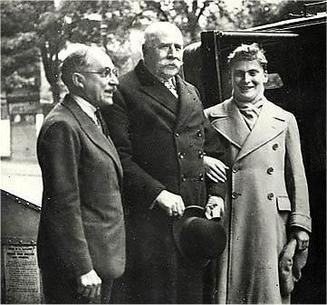

In the vast world of music, filled with artists, producers, and labels, one key figure often remains in the background yet plays a vital role in shaping the sounds we love: the A&R man. Short for Artist and Repertoire, A&R professionals are responsible for scouting talent, signing artists to record labels, and guiding their artistic development. But who was the first A&R man in the world? Let’s take a journey through music history to uncover the origins of this crucial role.
Before diving into the first A&R figure, it’s important to understand the context of the music industry in the late 19th and early 20th centuries. During this time, the invention of the phonograph by Thomas Edison in 1877 and the subsequent development of gramophone records revolutionized how music was consumed. For the first time, people could listen to recorded music in their homes, and a new industry began to emerge around the sale of these recordings.
As the industry grew, record labels like Columbia Records and Victor Talking Machine Company became the early giants. These companies needed someone who could both identify fresh talent and ensure that the recordings would appeal to the public. Thus, the concept of A&R was born.
Though the title “A&R man” wasn’t officially coined until later, Fred Gaisberg is widely considered to be the first person to fulfill this role. Born in 1873 in Washington, D.C., Gaisberg had a passion for music from a young age. He was a skilled pianist and became one of the earliest recording engineers in the world.
Gaisberg’s career began in the 1890s when he started working for the Gramophone Company in London, which would later evolve into EMI Records. At the time, recording technology was still in its infancy, and the process was far from what we know today. Early recordings were made using mechanical techniques, and the sound quality was limited. Despite these challenges, Gaisberg was instrumental in shaping the future of recorded music.
What made Gaisberg unique was his dual role as both a recording engineer and a talent scout. He didn’t just sit behind the recording equipment; he actively sought out artists who could create music that would resonate with the public. In this way, Gaisberg became the world’s first A&R man, combining his technical expertise with an ear for talent.

One of Fred Gaisberg’s most notable contributions to the music world was his discovery of Enrico Caruso, the Italian opera singer who would go on to become one of the most famous recording artists of the early 20th century. In 1902, Gaisberg traveled to Milan, Italy, to persuade Caruso to record for the Gramophone Company. Though Caruso was initially hesitant, Gaisberg convinced him to make a recording, and it was an instant success.
Caruso’s recordings became best-sellers, and he is now remembered as one of the first global music stars. This moment not only solidified Gaisberg’s reputation as a visionary but also marked the beginning of the modern record industry, where A&R professionals played a crucial role in connecting artists with audiences.
Fred Gaisberg’s career spanned several decades, and his impact on the music industry cannot be overstated. He traveled the world, recording a diverse range of artists from different genres and cultures, laying the foundation for the globalization of music.
While Gaisberg’s title wasn’t formally “A&R man” at the time, he embodied the role by scouting talent, overseeing recordings, and helping to shape the artistic direction of the artists he worked with. His pioneering efforts paved the way for the formalization of A&R departments within record labels.
In the years that followed, the role of A&R evolved, especially with the rise of rock and roll, pop music, and later hip-hop. Figures like **John Hammond** (who discovered artists like Billie Holiday and Bob Dylan) and Ahmet Ertegun (co-founder of Atlantic Records) continued Gaisberg’s legacy by shaping the musical landscape of their eras.
Fred Gaisberg was more than just an early recording engineer; he was a visionary who understood the importance of artist development long before the term “A&R” became commonplace. His work laid the groundwork for what would become one of the most essential roles in the music industry.
Today, A&R professionals continue to scout new talent, shape artistic visions, and connect musicians with audiences, all while standing on the shoulders of pioneers like Gaisberg. From the discovery of Enrico Caruso to the global spread of recorded music, Gaisberg’s contributions remain a cornerstone of the music industry, and his legacy as the first A&R man lives on in every hit song we hear today.


In the world of music, few people can boast of a journey as multifaceted and inspiring as that of Lucas Emeodi, better known as Kiing Lu. A culture entrepreneur, A&R, music promoter, and executive producer, Kiing Lu’s story is one of resilience, passion, and relentless pursuit of dreams. From his early beginnings as a rapper and producer in Jos to becoming a significant force in the Nigerian music industry, Kiing Lu has embraced every challenge with a mindset he calls “militant.”
He began his music journey as a rapper and producer in 2004/2005 in Jos-plateau state where he was born and raised. He went through his university days there graduating with a degree in Business Administration. He left Jos for Ghana in 2008 and lived there for 7 years understudying the music Industry, collaborating with music executives, and learning the business. Kiing Lu moved back to Nigeria in 2014 after getting an invite from a label to manage their artists. “While managing those artists, I’d discovered TG Omori, the boy director.” He met the creative director at a point where he did not have any music video references. He gave him his first one and then started introducing him to other artists. In 2019, Kiing Lu got an offer from Universal Music Nigeria and joined them as an A&R “It was an exciting opportunity for me to understand the music business from a global perspective. It was exciting because I’ve done everything from online blogging, online pr, getting artists’ songs into notjustok, tooxclusive…….
I’ve always loved being a support system for emerging talents” Kiing Lu said he had worked in Alaba (Days of Alaba music marketing) at the time “I was getting artiste’s songs into those mixes and also making a living out of it” He’d transferred the knowledge and experiences he had gathered into his work with Universal Music because they were a global entity that had not yet gotten their footings in Nigeria “I was made Head of promotions at Universal though I was still working as an A&R. At some point I managed artiste’s and even events. I wasn’t just doing this for Universal, I was doing it for myself because I wanted to learn. It wasn’t about the money or salary being paid, it was more than that to me” He talked about his goal at the time being to learn more about the business and when he had soaked up some knowledge and when it was time to leave he resigned and set up his own company, speedplugpromotions “speedplugpromotions is a label servicing company that handles promotions for a bunch of artistes like Tems, Tiwa Savage, Yemi Alade, Odumodu black, Odunsi, Bloodycivilian, wurld, Liyah, Adekunle Gold, Qing Madi, Yarden, Alpha P, Bella Shmurda, Dice Ailes, Victony, King Promise and many more. We don’t just work with individuals we work with labels, we have affiliations such as Universal, Warner Music, empire, Island Records, Virgin Music, and Def Jam. We’ve done promotions for a lot of artists in this Industry so I can hit my chest and say me and my team have done great in terms of amplifying music for artists that work with us” He went on to set up his music label “captive music” which he founded alongside his wife, Livy Land who he described as a multifaceted entrepreneur she owns her hair business, singer-songwriter, visual artist and she’s signed to his label. Captive Records is affiliated with Virgin Music and has released its first project “Militant Mindset”
Remember I mentioned he is an executive producer??? “That was the project that introduced the executive producer side of me and the A&R side of my brand. It featured a couple of artists like Odumodu black, vector, Dremo, skales, Ria Sean, and Rowlene from Ghana….” I asked about the vision behind the project and for him it was to focus heavily on Drille. “Drille resonates with my soul.” “I want to focus on pushing this to the mainstream” Kiing Lu has militant camp which is a platform created to push Drille music, it’s more like a community. As we know Drille is more like a niche and not everyone gravitates towards it here in Nigeria. He disclosed that it’s something he’d love to push the mainstream, a blend of hip-hop, Drille, and Afrobeat. “There’s a mindset embedded in this community ‘The militant mindset’ This mindset is to encourage people to pursue their dreams aggressively, relentlessly, and against all odds. We did our first event in July and the next one comes up in September.” The militant community doesn’t give room for laziness, you must have a frontier and bring something to the table, be it as a rapper, producer, graphic designer, or A&R; the end goal is the mindset. “I’m not where I want to be in life yet, I’m still pushing, I’m still building the bridges, building the networks, building the connections and the relationships.” He went on to express the importance of relationship-building in the Industry. “Relationship is one of the biggest assets you can have to survive in this music space. It’s a very priceless asset. It makes the job easier, makes the jobs, makes the journey smoother, you know?” KiingLu describes himself as a man on a purposeful journey, trying to lift others along the way, he considers himself a culture entrepreneur. Now, Lucas Emeodi who we know as Kiinglu the multifaceted cultural entrepreneur. Can we say the militant persona is more of an alter ego? “When I step my foot into the house, I am Lucas, the husband, and father but once I’m out of the house into the public I am kiing Lu but same heart, same person. The only difference is one is the professional side and the other is my personal side.” “As a brand, you need to know how to carry yourself, you always have to understand who you are. How you carry yourself is extremely important” he further expressed. Kiing Lu has been in the music industry for over a decade starting as a rapper before establishing himself in the music business and when I asked how that feels here was his response “16 years.
I feel excited that I was not forced by my parents, even though I rebelled against them wanting to be something else, I followed my heart. I followed my dreams and I am happy. I am living a very happy life now even though the dreams keep getting tougher but we enjoy the fact that we chose our paths and it’s what we want to do so we endure the pain, we endure the struggles but we also enjoy the benefits that come from it.” This brings me to a point of his journey where he after studying Business Administration decided to carve a different path for himself.
His parents were not at all supportive of this. “At some point, I was sent out of the house. My daddy wanted me to choose between his own decisions and my own. I chose my own decision, I left his house and kept doing my music thing and when he saw the resilience, passion, and energy I put into trying to follow my path he let me come back home and said he’d support me.” Do you know what’s the most striking and beautiful feeling ever? You follow your path, blocking out the noise and discouragement and it in turn works out and that was what happened in his case “On my wedding day he was so emotional, he said he remembered trying to kick against my dream and now seeing me succeeding in that same dream, it’s very inspiring to him and he has learned a lot from it.
This part of his journey influenced his brand. “Militant” I had to spin the meaning. I’m trying to re-engineer people’s mindset.” I asked him about the feeling of ever being underappreciated “The feeling of being underappreciated is a mindset. I try to condition my mind to focus on what is important. Are you making an impact? Are you expecting applause for the impact you are making? For me, I’m not expecting applause. My focus is to make an impact and also make money to take care of my family. I don’t care about appreciation or awards. If you think I deserve it, then hand it to me and don’t tell me to pay for it. I cannot put an award in my house, looking at it knowing I paid for it.”
He is big on his purpose and being able to live a free and real life. “People will not remember you for the amount you have in your account or the awards you have, they will remember to fit the impact you’ve made.” We further conversed on the same question “I’ve done so much for the industry, people that know these things know these things, even though some of them act like they don’t see it but they come to me in private. And one thing I’ve learned from my journey is to always buy yourself flowers. Do not wait for nobody to hand you flowers. Give yourself credit. If you do something nice shout about it, if you hit a milestone shout about it. Nobody is going to shout for you, you have to blow your trumpet and that’s not for your ego, it is for your Brand.” He went on to further explain his statement on the brand “It’s so people understand your brand is credible, people want to work because they see that you are doing well with what you are doing.”
His words ring with a sense of purpose and determination that has become the hallmark of his brand. “Impact first, money follows,” he said, encapsulating the driving force behind his career.“
I asked about his point of view about the struggles of music executives in Nigeria. “First of all, I’d say we all have our destinies in our hands so as music executives we need to remember we are human beings with dreams. So the struggle I’d say is people not allowing themselves to evolve, always trying to sacrifice for others without doing so for themselves. I’ve seen a lot of bitter music executives because of their past relationships with other artists. As a manager, you need to realize that you are a brand too.” The most fulfilling moment in his career was “I envisioned militant camp, the concept in my head, spoke to my creative director, we created a 3D version of the concept and then brought it to life. Now going to the event and seeing the place packed with people singing my song word for word, enjoying themselves, I was fulfilled but it was a point I knew I needed to do more. I needed to expand my vision beyond Lagos, so we are taking this event, militant camp to Abuja, port-harcourt, Bayelsa and Jos then we’d expand to Ghana” he expressed with pride and excitement.
Kiing Lu boldly and loudly encourages every creative executive to embrace the militant mindset, believe in their dreams, and keep pushing aggressively.

Last year, I had the pleasure of interviewing FirstKlaz, and I can confidently say it’s been nothing short of inspiring to witness his meteoric rise since then.
For those unfamiliar with him, allow me to introduce an impeccable creative genius and versatile artist—FirstKlaz is undeniably one to watch.
His journey has been fascinating, marked by his groundbreaking social media content, out-of-this-world storytelling techniques, and the development of genre fusions that seem almost unimaginable. His prowess is unmatched, and it was a privilege to delve into the mind of such a visionary artist.
Our conversation began on a light and friendly note, with FirstKlaz exuding positive energy and a contagious spirit. We even shared a moment reflecting on what had been a particularly stressful week for both of us.
If you know FirstKlaz, you’re likely aware of his controversial social media presence and the lengths he goes to promote his craft. I asked him how he manages the demands of this. “It’s a lot. Most people don’t know the amount of work that goes into bringing those contents to life. It’s crazy, but I can’t complain,” he revealed. And guess what? We might someday get a masterclass on content creation from FirstKlaz himself—fingers crossed!
FirstKlaz has released several tracks where he introduced fresh sounds, such as Gen Z Fuji, Gen Z Fuji II featuring Terry Apala, Gen Z Faaji featuring Joeboy, and Gen Z Arewa. Notably, in promoting Gen Z Fuji II, he spotlighted Aunty Ramota, a move that was as endearing as it was clever. When I asked what inspired these tracks, he explained that he wanted to blend old-school genres with new-school melodies and lyrics that resonate with Gen Z, hence the recurring title. How did this idea come about? “To be honest, I’m a deep thinker. I feel like while everyone around me sees things with their normal eye, I have a third eye. I like to be green while others are red,” he shared, offering a glimpse into his unique creative process.
It was clear that thinking outside the box was second nature to him.
We discussed how he managed to collaborate with artists like Terry Apala and Joeboy. “I’ve known Terry Apala for close to a year now. I made a freestyle and promoted it by mimicking bigger artists like Olamide, Burna Boy, and Jeriq. The first one I did was of Terry Apala, and it blew up. He then reached out to me, saying he was impressed. So when I did Gen Z Fuji, he reached out again, asking me to send him the beat, and that’s how Gen Z Fuji II came to be. With Joeboy, it was a similar story. We’ve known each other for about a year, and he’s surprisingly mentioned me in some interviews. I was just doing my thing, and people were watching.”
FirstKlaz recounted how he and Joeboy became acquainted. “When I posted that freestyle, he reposted it on his story. We eventually connected, and when I dropped the first and second verses of the song, Joeboy told me he liked it. I was in the studio when he sent me that message, and I was like, ‘Big bro, can you please give me a verse?’ and he said, ‘Why not?’ In less than two days, he sent it.”
As we delved deeper into who he is as a person, FirstKlaz opened up about where he draws his inspiration. “I like to do things the way I feel in that particular moment. I don’t drink or smoke, but if I want to be in that zone, I can be there without any influence. Sometimes I feel like I have a talent for zoning out to any zone I want to be in.”
He also spoke about his motivation and background. “Where I come from and my family. I grew up in a crazy part of Abuja, Yanyan,” he explained, likening it to a box. “There’s an OG every youngin wants to become. It’s like we didn’t know any life outside the box. I thank God for the secondary school I went to, where I mixed with the rich kids. My parents spent all their money on my education, and that’s when I realized there was more to life than that lifestyle.”
He fondly recalled a particular girl he met during his secondary school days, Amanda “She changed my mindset.”
Folks! there you have it the person who inspired the name of his popular signature piece, his doll ‘Amanda’.
FirstKlaz recently debuted a new hairstyle, inspired by none other than Frank Ocean. “I was on my Afro and didn’t know what to do with it. The day I was thinking about going to the salon to cut it, I saw a picture of Frank Ocean, and then I told my neighbor to help me plait my hair like that.” This ties back to something he’d mentioned earlier: “I like to do my things organically.”
When it comes to handling critics, FirstKlaz maintains a positive outlook. “If everyone loves everything you do, then you have a problem. A lot of times when I post stuff, I get hate comments, but when it starts blowing up, the same people who criticized come back praising the song.”
Looking ahead to 2025, FirstKlaz has big plans: “I’ll be everywhere, not just Nigeria or Africa—I’ll go global.”
In an interesting revelation, FirstKlaz shared that his real name is Justice Elsa Joseph—a detail he tends to keep under wraps (though I might just be the first to document it!).
During our chat, he spoke about how his family motivated him, especially his older brother, who was the first to believe in his craft and sees him as a global artist. “He made me start believing it more.”
Fun fact: FirstKlaz loves to draw, paint, and has a passion for fashion. And here’s something new—he’s a fan of toys, particularly his fidget spinner and action figures.
But his journey hasn’t been without struggles “There was a point when I was feeling like nothing, I started doubting myself and everything I was doing.” This brought him to share a story of when he put out a freestyle to a song and it blew up. He’d shown his friends and nobody liked it but he put it out like that and it took a few days but it blew up all of a sudden “I saw my phone vibrating. That was the first time I saw my phone like that, getting that amount of buzz. I was using one iPhone 6, and half of the screen wasn’t working. I wasn’t even seeing anything with half of the screen so I had to turn the phone to check what was happening”
He talked about how he felt before putting out that freestyle “When I put it out and didn’t get engagement I felt bad somehow because my friends were like ‘I told you this stuff was not mad’ but still I said Omo I don’t have anything to lose, I wasn’t concerned with engagements and I was just doing my thing. The freestyle was everywhere and the artist had to do an open verse for the song but he didn’t post my version though.”
As for his future collaborations, FirstKlaz dreams of working with Kanye West, who he feels shares a similar mindset, Frank Ocean, and in Nigeria, Rema and Asa.
He left a powerful message for other emerging artists: “Be yourself, walk with God, and don’t take no for an answer. I got a lot of no’s, but I kept moving. People told me to my face that I would never blow, but I just kept moving.”
As our conversation drew to a close, I asked FirstKlaz how he felt after reflecting on his journey. “I thank God for where I’m at today, but I still feel there’s a lot I need to do. I’ve not even started; I just need to keep the fire and keep it going.”
FirstKlaz’s love for music shines through when he speaks about the songs that resonate most with him—Rema’s Calm Down and Burna Boy x Jorja Smith’s Gum Body.
As he continues to push boundaries and redefine what it means to be an artist in today’s world, one thing is clear: FirstKlaz is just getting started.

Welcome to “The Book” interview series on A&R Duty, where we delve into the lives and experiences of industry leaders shaping the future of music. Today, we’re honored to feature Akinyemi Law, Africa’s finest lawyer for creatives and a powerful advocate for the entertainment industry. In this exclusive interview, Andrea Andy sits down with Akinyemi to explore his remarkable journey from aspiring musician to legal powerhouse and uncover the driving force behind his tireless advocacy for artists and creatives. Join us as we uncover the story behind the man on a mission to revolutionize the industry.
In the ever-evolving landscape of the Nigerian entertainment industry, few names command respect like Akinyemi Law. Africa’s finest lawyer for creatives and a powerful advocate for the industry, Akinyemi’s passion is as evident as his long, winding journey. During our conversation, one thing became clear: this is a man deeply committed to his craft, with a story that is as inspiring as it is compelling.
Akinyemi describes himself as an advocate for doing things properly—a principle he has upheld for over 15 years. “I try my best to educate people and champion the interests of creatives in the industry,” he shared. Before our chat, I was curious about the man behind the mission. What drives a lawyer to fight so fervently and publicly for the creative industry? The answer, as it turns out, lies in his journey.
Once a recording artist and songwriter, Akinyemi Law harbored dreams of becoming the next 2Face Idibia. “I wanted to be like 2Face Idibia. As a young star, he was my idol. I gave it my best shot, recording and writing music for some years until I qualified as a lawyer. After that, I thought about becoming a talent manager or a label owner, like my role model, Audu Maikori.”
Akinyemi’s foray into talent management was marked by dedication and devotion, a journey he walked for almost two years. But when his talent decided to take a break from music, Akinyemi redirected his path towards law. “I became an entertainment lawyer and tried to represent everyone in the entertainment industry. But five years down the line, I decided to focus on music law.”
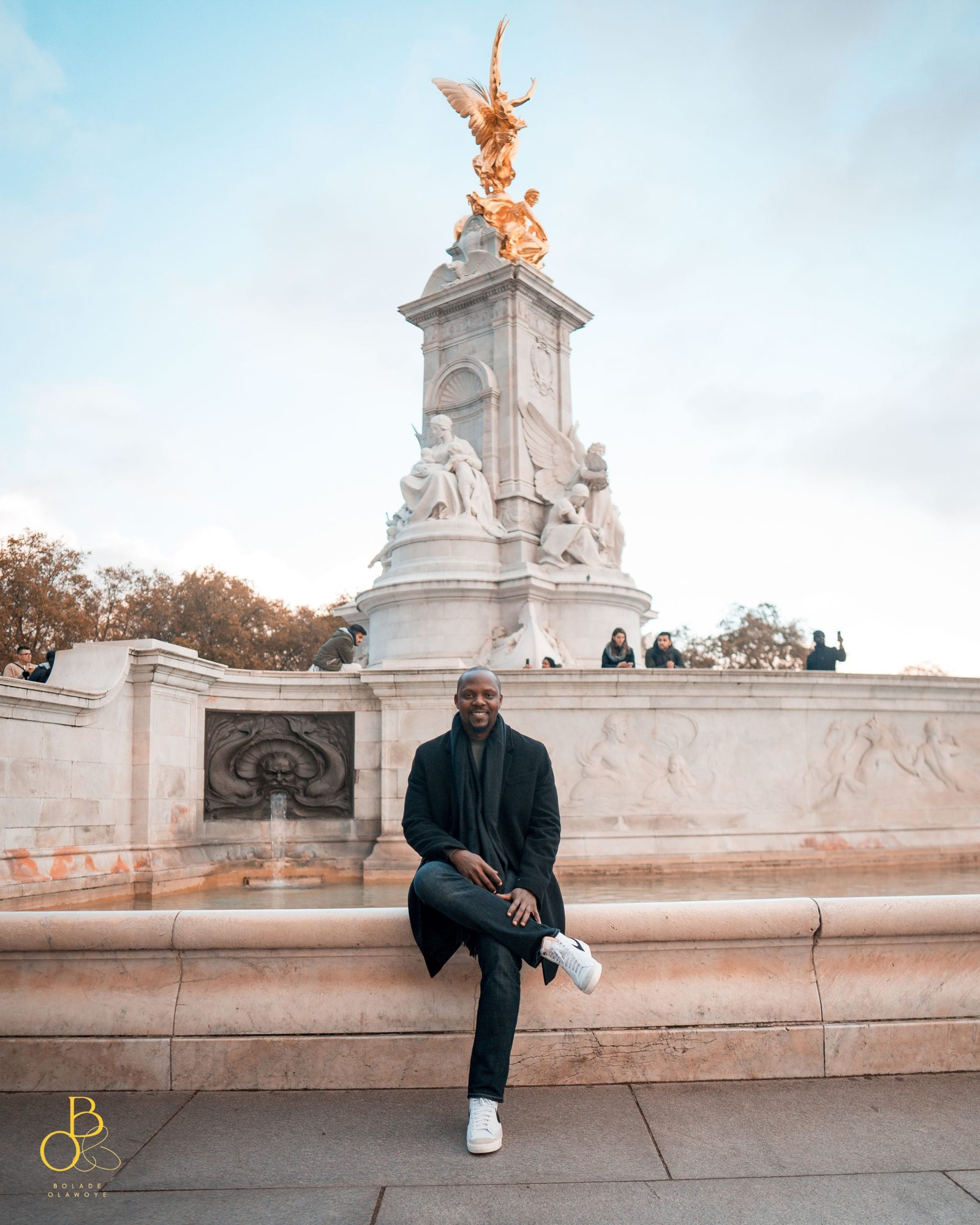
His journey as a student at the University of Lagos was one of self-evaluation. Constantly reflecting on his future, Akinyemi aligned his goals and discovered his passion for entertainment law in his third year. “I was reading the newspaper and saw an interview with Audu Maikori, the founder of Chocolate City, and that gave me ideas.”
“I’m happy I took the path of being a music lawyer,” Akinyemi said with a smile, “I’m very happy.”
Akinyemi’s background and experiences fuel his passion. When asked about how his journey from aspiring performer to legal advocate for artists shapes his work, he said, “I’ve been desperate, I’ve been broke, I’ve had dreams of climbing stages and expressing myself at the highest level. So, in a way, I think I connect well with talented people.”
However, Akinyemi’s journey has not been without challenges. He spoke candidly about the difficulties of being the most knowledgeable person in a room full of ignorance. “If you are the only knowledgeable person among ignorant people, they can come together to frustrate you. I learned that early, which is why I started my educational initiatives.” He believes that educating others is key to overcoming resistance. “If you are trying to do things properly, those who don’t see things from your perspective can become your greatest adversaries.”
Curious, I asked about the pressures of advocating for the right way to do things. Does he feel threatened? Akinyemi believes that while some appreciate what he does, the only pressure he experiences comes from within. He has seen the legal landscape evolve and believes there is still much work to be done, particularly in the protection of stakeholders and music executives. “We need a collective voice, more efficiency, and a dedication to learning. If you work in music and don’t have a mentor, you’re cheating yourself out of valuable information and networks. We need more platforms for skill transfer and scholarships that enable people to learn.”
The Nigerian music industry is becoming a global phenomenon, and there are ongoing debates about its structure. I asked Akinyemi for his thoughts. “We’ve come a long way over decades. People have been setting up labels for many years. There’s been an industry because there’s been demand and supply; there’s been monetization, so it can only get better. There’s been a lot of effort locally and internationally to make the best music and create a system where we’ve been able to project our local music globally. I don’t have any worry—our structures might not be perfect, but they will get better.”
After a deep dive into legal talk, we shifted gears to get to know Akinyemi on a personal level. How does he de-stress from the workload? “I like to work out, hang out with people, drink wine, enjoy fine dining, and spend time with my kids.” So, if you ever want to make Akinyemi Law happy, you now know—good wine and fine dining are the way to his heart.
Throughout our chat, Akinyemi spoke often about his kids. When asked about his motivation, he was clear: “My kids are my biggest motivation. I want to build a legacy for them. I didn’t grow up poor, but I want to create a life of abundance for my family.”
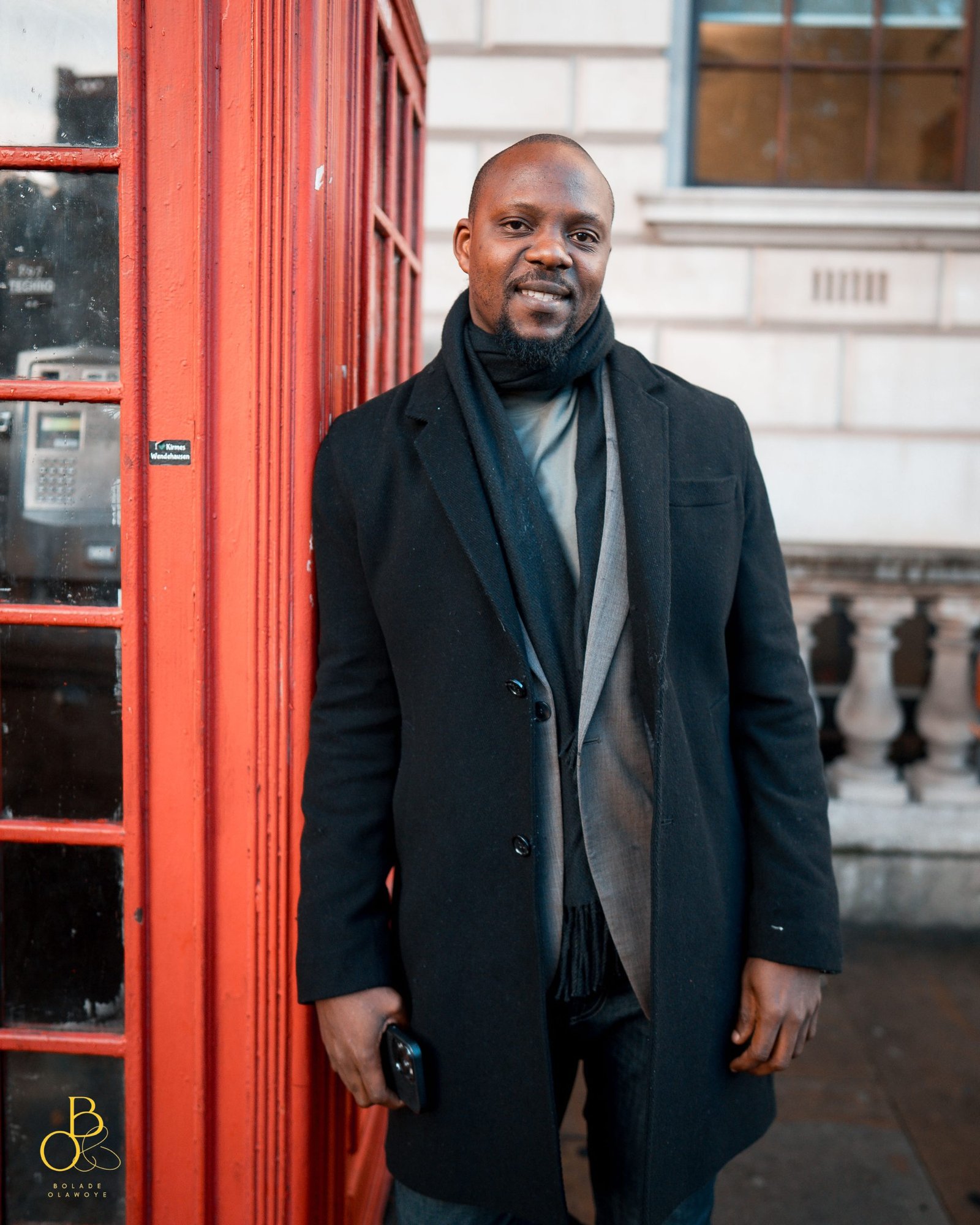
In a playful moment, we played a “red pill, blue pill” game. The red pill lets him reshape the Nigerian music industry by implementing one groundbreaking legal reform that will benefit artists and creators for generations, but it means he must step away from his current career. The blue pill allows him to continue his passionate work in the industry as it is, with all its challenges and rewards. Which would he choose? It was a tough one, but he chose the red pill. “I’d be at peace knowing that I can make the industry a better place. Maybe I’d go into football or something else I like—because I like football—or maybe even education. But walking away from music is tough. However, if my name is written in gold for coming up with an idea that changes the industry for hundreds of thousands of years, then I’ll be at peace with that.”
One thing became abundantly clear during our conversation: Akinyemi Law is extremely family-oriented. “I love being a family guy,” he said.
His career has not always been smooth, and a significant challenge has been dealing with people in the industry who do not want others to shine—a mentality he believes is rooted in greed. He does his best to break that status quo, believing that better knowledge leads to better decisions.
Akinyemi credits his upbringing in a music-appreciative environment as a key factor in shaping his identity. “I’m thankful. I don’t have a sad story growing up. My parents set me on a journey that is also going to help take care of my kids.” Above all, he is grateful for the gift of life and his family, which he counts as his biggest
As our conversation with Akinyemi Law comes to a close, it’s clear that his impact on the entertainment industry extends far beyond his impressive resume. With a heart for creatives and a passion for justice, Akinyemi is a shining example of what it means to use one’s talents to make a difference. We’re grateful for his time and insights, and we can’t wait to see the continued impact of his work. Thank you for joining us on this episode of “The Book” interview series on A&R Duty. Stay tuned for more inspiring stories from the music industry’s most influential figures.
Written by Andrea Andy
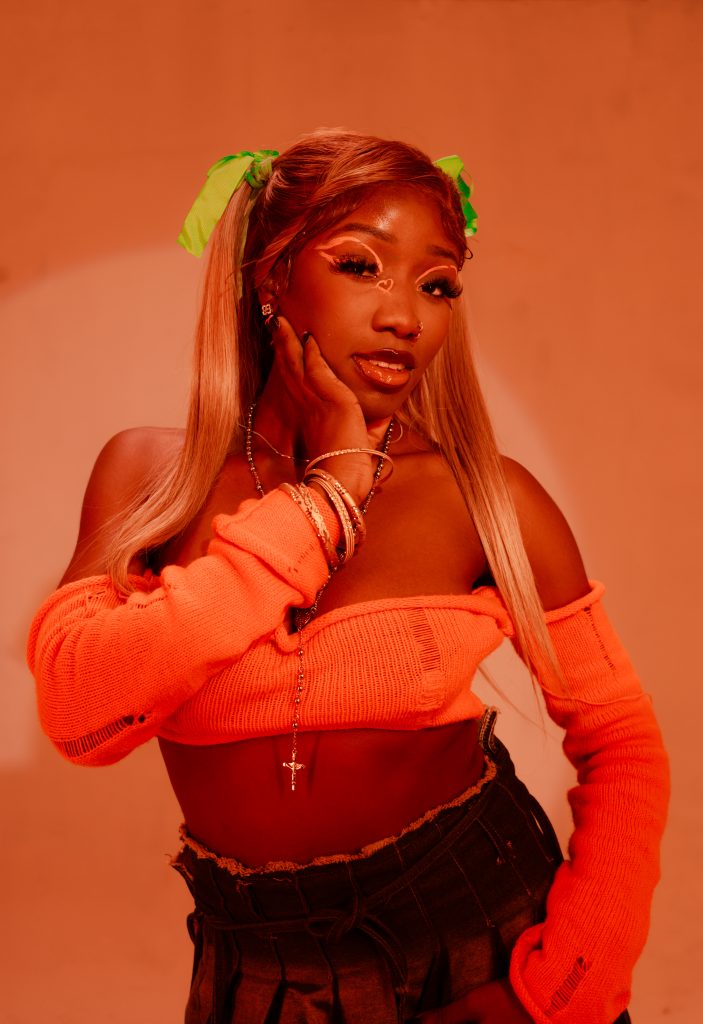
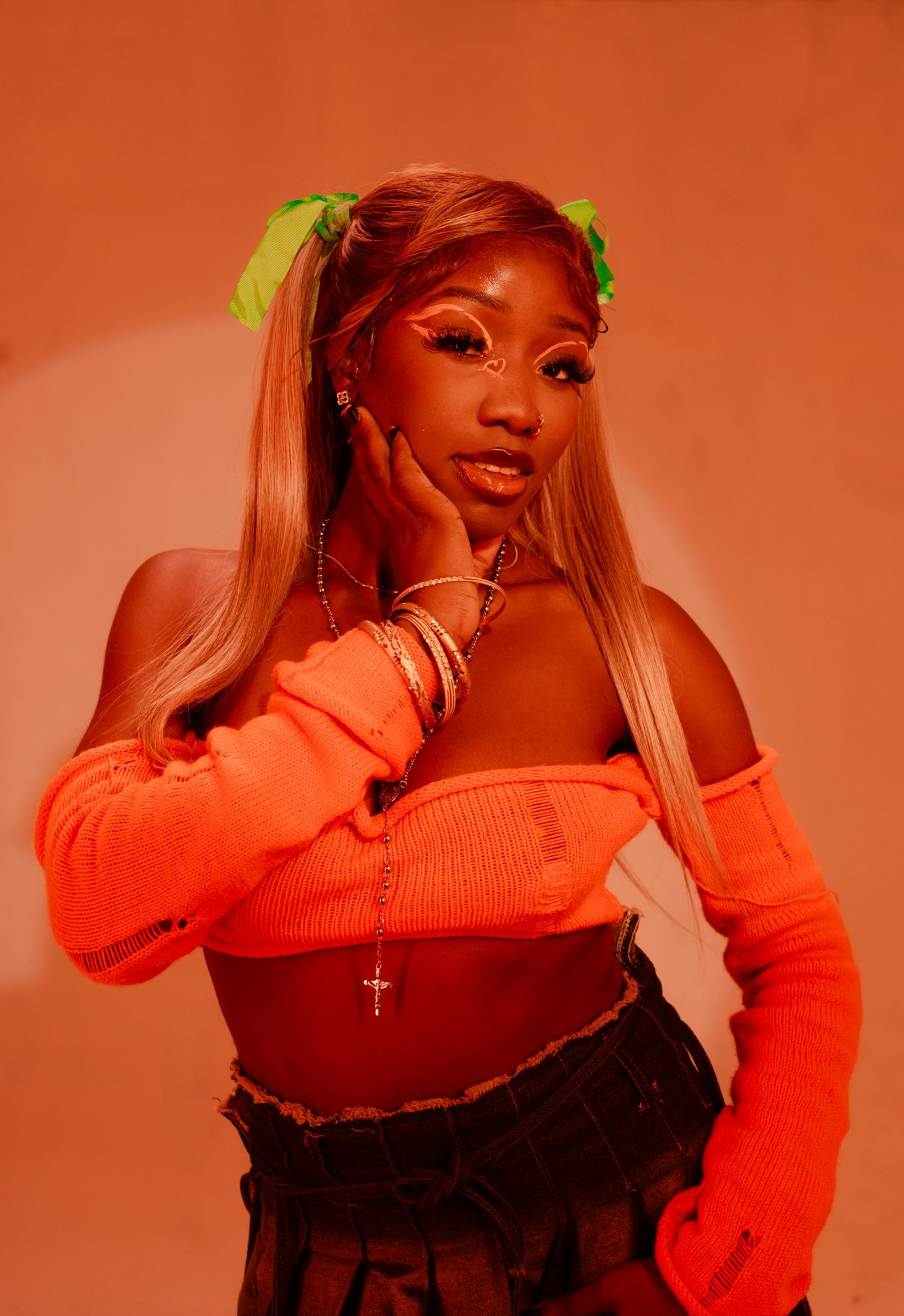
Mbadugha Pearl Kosisochukwu, popularly known by her stage name “Kohsea,” is a Nigerian female R&B/Afrobeats artist.
It was a hot Sunday afternoon, the weekend after Kohsea returned from her trip to Port Harcourt for her dad’s burial, back to Lagos.
The conversation started vibrantly. Kohsea was open and in high spirits, although she began by saying she was in a dark place and needed self-recovery. “I’m an independent female artist who hasn’t exactly gotten her big break, and right now, it’s testing my patience, my faith… This is just that moment when you know you cannot give up. I know there’s potential here, I have something to give to the world, but I must find the best way to deliver it.”
Kohsea talked about her branding, how she is trying to figure out her brand, and how to properly position it. She seemed conflicted, and we had a chat about it. Despite her struggles, Kohsea is hard to miss. She carries herself with such power that the Gen-Zs would say, “She is who she is.” From the way she speaks to her lifestyle, artistic style, and overall energy and aura, you can’t afford to miss Kohsea in a room. I first encountered her at Hitsound’s Guinness World Record attempt, and I would say it would be difficult to tell her apart from an A-list celebrity. She’s an artist one could say was born to do music.
So far in my conversation with Kohsea, one thing was evident: her hunger for growth. “I have shown people a phase of Kohsea, and I feel my listeners and supporters are looking forward to the next thing Kohsea is going to do,” she said. “As an artist, you can’t keep giving rice and stew every time you’re serving; you need to switch things up,” she explained. She mentioned she is open to working with more people—producers and all—to broaden her exposure and get inspired.
She recounted how she’d put herself under pressure and was finding it difficult to get inspired enough to make music. “I was in the studio, and for three days we were finding it difficult to make music, and it got us under so much pressure because we wanted it to work.” This pushed her to try and relax; she’s gone out and tried to de-stress, and so far, it has helped her feel lighter.
Kohsea talked about her current vision: “The phase I’m in right now as Kohsea, my music and brand, I just want to give the world better; I want to deliver the best of what I can create.”
Kohsea is known for her lyrics about heartbreak and love. She wears the persona of a “baddie,” and in this interview, I asked her to explain it all. She said, “You know how you look for what you don’t have. Growing up as a young girl, I can’t say I’ve experienced what true love is from the opposite sex—only in the movies. I live in a delulu world.” Kohsea explained how she is a lover girl at heart and has a lot of love to give despite being hurt. She explained the lyrics of her song “Need You,” expressing how she is ready for love and speaking to a boy she likes, asking him to make things work between them. “I’m tired of the bare minimum. The bare minimum never gets you the best experience of love.” She explained that this was also what inspired “Deep Freezer,” written after her breakup. She addressed the part of her being a “baddie” as just her style and how she likes to dress.

She went on to say that in her future songs, she’d be bringing something fresh and vibrant, something new. “I’m trying to bring the spice in the ice. No more sad Kohsea that sings heartbreak songs. I want to focus now,” she jested.
Kohsea talked about how she found her sound: “I listened to a lot of white artists while growing up, so this influenced my style a lot. I did a lot of competitions, and I was in the choir. For the longest time, I didn’t know what genre I was singing, and it was people who pointed out that my style seemed foreign. This helped me not put myself in a box because I was just singing on the beats for the longest time.”
We also discussed her fanbase, called “Planet K,” and how she wants to put out a body of work to properly explain her vision.
Kohsea explained how important music is to her. She moved to Lagos from Port Harcourt after university to chase her music career. This was after sneaking around to make music back in Port Harcourt, where she mentioned going as far as blocking her family from her socials, considering that she was sent to medical school. Coming out to say she wanted to do music was not going to go well. Fast forward to her moving to Lagos: she got her family on a call and told them about her plans to pursue her career as an artist. This was in 2022. She said the price she had to pay was her parents telling her that if she chose that path for herself, she couldn’t call home for anything, and she stuck to it. “If disobeying my parents is not enough reason for me, then I don’t know how important music is to me,” she added. She talked about the expectation placed on the girl child to stay with her parents until she gets married, and how she had to break out of the norm.
Kohsea talked about when she realized she wanted to do music. She was in her final year at the university, and she had the option of chasing her dream of doing music or going abroad for her master’s, which might have been the end of her dream. Going abroad to study costs a lot of money, so it would have been difficult to explain to her family that their resources had gone to waste. That was when she made the decision she made. She seemed content when she said, “Do you know what’s up, Andrea??? They see me now. I was at my dad’s burial, and I was told to sing. I was in shock, but it was all so wholesome because I fought for this, and now they all want it to happen as well. I’m in my ‘not giving up’ phase.”
Kohsea explained the jump between studying a medical course and chasing her career as an artist: “It felt impossible. Dropping out felt like a better option, but I had to discipline myself.” She mentioned that at some point, she was in conversation with a top stakeholder in the industry, and while it felt like an alignment, she wasn’t ready because she was held back by fear. “I had to conquer fear and self-doubt.” She talked about the opportunities she’d gotten to perform on stage when Omah Lay was in Port Harcourt. Dandizzy had also given her a spotlight on his stage. She talked about how she got the opportunity to perform in places she didn’t expect and how it all felt like an alignment. She mentioned that there were a lot of signs, and it took a while before she was bold enough to embrace them.
Kohsea described her happy place as being within herself.
We took a walk back through her background and how it influences her as a person and her lyrics. She said that while she grew up with tough love and had misunderstood it at the time, it made her yearn to be loved by the opposite gender. But as she grew, she started to understand the approach and realize it wasn’t because she wasn’t loved—it was just their way of expressing their emotions. “I’m trying to walk away from my trauma and bad habits I picked up while growing up. I want to come out of it and bask in true love.” She jested about how PH (Port Harcourt) pidgin is, and when she has to speak it: “PH pidgin comes with authority.” She teased that she has a song that brings out her spirit as a PH babe!
We talked about male domination in the Nigerian music industry and the struggles. She pointed out that women used to be so afraid. It used to seem like the industry didn’t support women, but it was more from a place of fear, and the ones who dared, got backlash. She mentioned names of ladies in the industry who have dared to do things their way, and she expressed her respect for them. “There’s space in the industry for women.” She recounted what someone had told her. For Kohsea, her only struggle is getting investments.
Kohsea used to organize singing competitions back in secondary school. She attended an all-girls school and was quite extroverted. “I used to get called to sing at the parties of my classmates, and I’d get paid with their provisions or dinner that night” So apparently, music had started paying me before I knew I could make money off music,” she jested.
She talked about how she started organizing talent shows with other girls who knew how to sing when she was in SS3. “Funny enough, I never won any of these competitions despite being an organizer because there were so many other talented girls. I believe this was one of the things that shaped me.”
Kohsea mentioned she’d worked at a club after moving to Lagos, where she worked as a bottle girl. It was her way of making ends meet and funding her music.
Kohsea has been putting music out officially since 2020. She recounted how she almost signed a messy deal with an independent artist that would have cost her a lot, but she was saved by an Entertainment lawyer, Akinyemi Law who was fighting against bad deals in Nigeria. She described him as God-sent.
Kohsea had so much positive energy and Insightful Information to share. She is a powerhouse of knowledge and she knows who she is.
Kohsea said she plans to release two more singles before the end of the year.
Kohsea talked about the high charges by producers which forced her to learn how to record herself.
Kohsea said a milestone for her is to achieve 100k streams on her song before the end of the year. “It seems achievable and I’m working towards it.” “I also want to work with A and B list artists and also to be on the Ijoya playlist” She mentioned that she wants to build a strong team with people who genuinely have her back.
Kohsea said the most fulfilling part of her doing music is having something to offer and having a way to impact the lives of other people. “I like the fact that music is shaping me into the woman I’ve always wanted to become.”
“I want to chase my dreams. I am talented”
Kohsea encourages every woman to fight for what they want. “Music found me and changed my mindset, it saved my life.”
As we came to the end of our conversation, Kohsea sang a line from her favorite line from her favorite song ‘Free Mind’ “This is the peace that you cannot buy…..” to her it brings the feeling of elevating and being light weighted.
She shouted to A&R Duty to close our chat for being the real deal.
Written by Andrea Andy – 28 Aug 2024
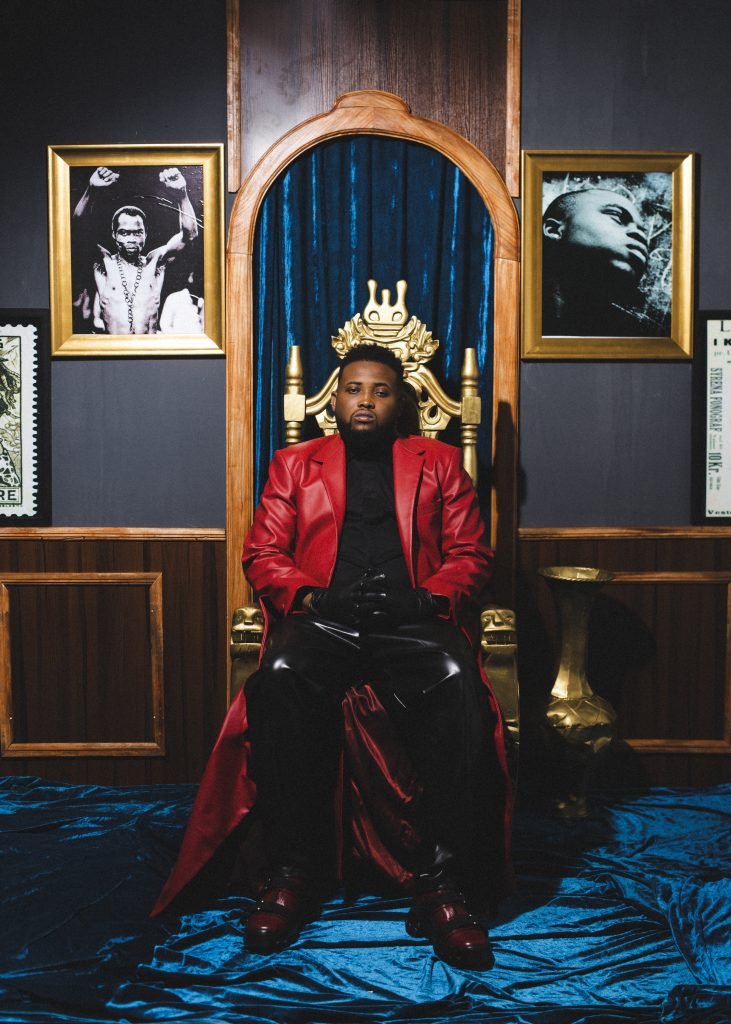
Nigerian rap sensation Chinko Ekun has long been hailed as a master of his craft, weaving intricate lyrics and infectious beats into a signature sound that has captivated audiences nationwide. But beneath the surface of his chart-topping hits and sold-out shows lies a complex and deeply personal artistic journey. In a rare and intimate conversation with A&R DUTY, Chinko Ekun pulls back the curtain on his creative process, sharing the inspirations, challenges, and triumphs that have shaped him as a person.
“The Book”. Conducted by Andrea Andy, this exclusive interview offers an unparalleled glimpse into the mind of a true creative genius, revealing the passion, perseverance, and dedication that have solidified Chinko Ekun’s position as a leading voice in Nigerian music.
I engaged Chinko Ekun in a chat about his journey and plans for the future regarding his career moving forward.
Chinko Ekun stands out—a vibrant soul with an energy as infectious as his lyrics. In speaking to Chinko Ekun I encountered a man brimming with positivity, a “ray of sunshine” as I quickly realized during our conversation.
Chinko’s journey from studying law at Obafemi Awolowo University (OAU) to becoming an award-winning rapper was far from a walk in the park. “It’s been rough around the edges…but I’m grateful for the support from my family and meeting good people,” he reflected with unmistakable humility. This humility anchors him as he navigates the choppy waters of the Nigerian music industry. For Chinko, the strength he derives from his support system is more than a safety net; it’s his driving force, a source of pride that fuels his relentless pursuit of success.
Chinko boasts about the support system he gets from his parents “My dad used to pay for my studio sessions”. He shared a story of how he got scammed once by a guy who promised to play his songs for an artiste he idolized, Jesse Jagz. “He has asked me to pay him 95k, this was in 2012 2013, I’d gone to my Dad to ask for the money. He wrote me a cheque for 100k to support me, the 5k was for my transport. I never heard back from the guy after giving him the money.”
As our conversation deepened, Chinko Ekun shared a guiding philosophy that has steered him through the highs and lows of his career: “No matter how good a product is, it takes the right people to market it,” he emphasized, underscoring the importance of teamwork. “I met people along the way who helped me amplify my craft.” Chinko’s gratitude extends beyond mere words—it’s a testament to the “God-given talent” he cherishes and the people who have stood by him.
Before he became known for his rap, Chinko Ekun explored several other talents. He played the drums in church, where he was quite well-known, and even dabbled in dancing—a talent he humorously admitted he no longer possesses. Interestingly, he also used to chant before he began rapping.
Despite setbacks in his career, Chinko Ekun spoke only with a deep appreciation for the lessons learned, with no trace of bitterness in his voice. When I asked about his early days posting freestyles on Instagram, as far back as 2011, he reminisced about just wanting to showcase himself online when the app only allowed 15-second videos. Chinko describes himself as a “soft, cool sweetheart,” a stark contrast to the fierce alter ego that emerges in his music.
One unique aspect of his style is the infusion of fake Chinese into his rap, a tactic he used to stand out. “Till today, if you rap in Yoruba and infuse Chinese, you’d be under my shadow,” he said with a hint of pride. His stage name, “Chinko Ekun,” has an interesting backstory. Before adopting this name, he was called Chun Li in secondary school because of his Chinese-like appearance, which eventually evolved into Chinko. Not wanting to lose these identities, he fused them, inspired by his 2013 debut song “Ekun.”

One thing became clear throughout our conversation: Chinko Ekun is fiercely passionate about his craft. He eagerly wants people to hear him rap, considering himself a fierce rapper. Reflecting on the moment he won an award for “Able God,” he felt a deep sense of accomplishment. “I was given that award by one of my icons, Reminisce. I felt fulfilled. It was a moment to make my parents proud,” he said. When I asked if he was able to sleep after receiving the award because I knew I would be bubbling with way too much energy to do so if I was in his shoes, he humorously admitted, “Meeee??? I love my sleep o.” Alright, Chun Li! I guess we do not have that in common.
Chinko Ekun shared a memorable experience at the Headies Awards, where two years before winning, he had wished to be on that stage. “God listens, and it’s good to work,” he remarked, reinforcing his belief in hard work and faith.
We also touched on his “Jaga Jaga” cover, a rendition of Victony’s single that shook the internet. Chinko had much to say about his journey in the industry and the mistakes he’d made, but he mostly laughed about it. He enjoys painting his perspective on every song he listens to, even though he was initially hesitant to record the cover. “I won’t lie, I removed a lot of it…When I was done recording, I sent it to Zlatan. He wanted me to put it out and even offered to send me his video director just so I would shoot the video. I can’t lie, I felt emotional while shooting the video, and when I dropped the cover, Victony had to reach out to make sure I was good,” he recalled. Chinko took pride in owning up to his “B.S.,” as he put it, and hinted that he would speak more on that part of his journey in the future, probably through a body of work.
In 2022, Chinko Ekun released “Indoorstrict,” a project that received mind-blowing comments but strangely didn’t reflect in streaming numbers—a commentary on the consumption of rap in the Nigerian music industry. Reflecting on his over-a-decade-long journey, Chinko has gained a deep understanding of how the industry works. “I know you can paint pictures through your words, and that’s what I did on Indoorstrict. It was a risky dare because a lot of people do not like to own up and talk about what they are going through,” he explained. The project resonated with many, garnering over a thousand covers from people eager to share their own stories.
Chinko’s passion for nurturing emerging talent was evident when he pondered the challenges faced by young rappers in various parts of Nigeria. “To an extent, some of us were able to make a little success and fame via the rap genre, but now that it’s on the lower side, what is the fate of a younger rapper just starting in Benin, Onitsha, Anambra, Ogun State? Do they switch?” he asked, a rhetorical question highlighting the difficult choices faced by upcoming artists. The song was initially six minutes long but had to be shortened—a decision that speaks to the depth of his message.
Gratitude is a recurring theme in Chinko Ekun’s life—gratitude for his talent, which puts food on his table, and for the good people around him. His love and appreciation for God, his family, and his supporters are qualities I greatly admire. Fun fact: despite his fiery stage presence, Chinko Ekun is quite introverted. He candidly discussed the struggles of juggling school and his career as an artist, as well as the things he has seen in the industry.
“The industry is a challenging environment; you just need to know how to navigate it. It’s full of users—I was taken advantage of a couple of times,” he revealed.
As our chat drew to a close, I asked Chinko Ekun how he felt about his journey thus far. “No single regret, only life lessons. I’ve learned, I had to learn the easy and hard way. I feel like I’ve grown,” he said, reflecting on his personal growth. Then, he made a surprising announcement: “I’m moving to the business side of music. It’s been a journey where I’ve been able to own up to my mistakes, and I want to make sure the upcoming ones do not go through the same things.” Chinko Ekun reflected as our conversation drew to a close. It’s this growth that now drives his shift from the spotlight to the business side of music. With a decade of experience under his belt, Chinko is determined to ensure that the next generation of artists doesn’t have to navigate the same pitfalls.
Chinko’s plans for the future are ambitious and exciting. “I’ve taken like two years of my life to understand how the music ecosystem works. I’m on the wave of being able to liaise between every important creative in the music ecosystem and also monetize it,” he explained. A milestone for him is winning a Grammy and bringing up talents that would add to his purpose in life. “Success is not just about making money; it’s about the lives you’ve touched and what people will say about you when you’re gone and even when you’re there.” he shared, his voice brimming with purpose. For Chinko, success isn’t just measured by accolades or wealth, but by the lives he touches along the way.
Chinko Ekun is driven by a desire to help younger artists reach their dreams. His advice is both practical and inspiring: “First, believe in yourself. You have to believe that you can do it; if you doubt, you will see more reasons why you can’t, but if you believe, you will see reasons why you should do it amidst challenges and obstacles. You have to grow and you have to learn, even if it costs you getting mentorship. You need to understand that you will crawl before you walk. Vector once said to me, ‘Most people want the result, not the process, but they fail to remember that you don’t build a house from the ceiling.’” Chinko holds on to this wisdom, a reminder of the power of process.
As he steps into this new phase of his career, Chinko Ekun’s journey is a testament to the power of belief, perseverance, and the willingness to learn from every experience.
Written by Andrea Andy – 16 Aug 2024

Nigeria’s music industry is growing rapidly, with a diverse range of music genres and talents. This has created a lot of opportunities for entrepreneurs and investors looking to get involved in the business side of music in Nigeria. Here are some of the music business opportunities available in Nigeria:

In conclusion, Nigeria’s music industry is full of opportunities for entrepreneurs and investors looking to get involved in the business side of music. Whether you’re interested in music production, artist management, record label management, music publishing, music promotion, music equipment sales and rental, or music education, there are many ways to get involved in the music business in Nigeria.


A strong marketing strategy can help you succeed as a musician. In this article, we’ll discuss seven steps to achieving your music marketing goals and show you how to put them all together into a cohesive plan that will take your career to the next level.
You don’t have to be a rocket scientist to know that setting goals are an effective way to achieve your aims. But did you also know that if you don’t set specific, measurable, and achievable goals, your chances of success are reduced dramatically?
You can use the SMART method when setting your music marketing goals: S stands for Specific; M means Measurable; A is Achievable; R signifies Relevant; T represents Time-bound (specific).
For example, “I want to get 100 plays on SoundCloud” is not a good goal because it’s neither specific nor measurable. “I will work out 5 times every week over the next month” would be much better as it’s both specific and measurable (and also achievable).
Now that you have a clear goal in mind, it’s time to determine who your audience is. Who do you want to reach? What kind of music do they listen to? Are they likely to be on Facebook or Twitter? How old are they? What genre of music are they interested in hearing?
What makes this step so important is that if you don’t know who your potential customers are, then how can you market yourself effectively? In order to find out who these people are and where they hang out online (and offline), I recommend doing some research with Google Analytics. This information will help guide you through the rest of this process.
The next step is to research what others are doing, which includes your competition but also other musicians in your genre and bands in your area or scene. Look at their websites, social media accounts, and videos. If they have a YouTube channel or any online presence, check that out too! Not only will you learn from their successes (and failures), it will give you ideas for ways to promote yourself as well.
The tone of voice is the personality of your brand. It’s how you speak and what you say, but it’s also about how you present yourself in text and images on social media.
You want to be authentic, consistent, and unique so that people can identify who you are. Your tone should be relatable too; if someone hears an artist they like when they listen to yours, that’s a huge win!
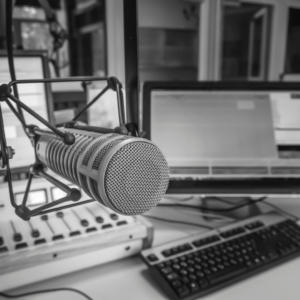
After you’ve done your research and tested your niche, the next step is to choose which marketing strategy will work best for you and your music. This may mean choosing one or all of these options: social media, blogs, email marketing campaigns, and more. You’ll need to keep in mind that not all of these channels are going to be right for every artist or project—you’ll have to decide what’s best for you! Choosing an appropriate channel means taking into consideration factors like whether or not it suits the type of music you’re creating (for example: if you’re releasing an acoustic album with heart-felt lyrics about love lost, Instagram probably isn’t going to be an effective choice). You should also consider how much money is available for marketing efforts as well as who your target audience is since this will influence which channels might work better than others. Finally, don’t overlook personal preferences either; even if another person thinks something “should” be done differently/better/more often than they do doesn’t mean it’ll actually work out well when applied within their own context so make sure whatever works best fits within both criteria before moving forward with any decision-making process here!
As in any business, you have to know how much money you can spend. You can’t just throw it out there without a plan. You will need to figure out your budget and determine how much of that budget should be allocated for marketing purposes. If possible, I recommend putting aside at least 20% of any revenues generated from your music sales or performances for marketing and promotion purposes.
Once this is done, devise an action plan and create a marketing plan, content calendar, and social media calendar that includes specific strategies and tactics for reaching all audiences (including fans, promoters, bloggers/media outlets). This will ensure that no stone goes unturned when it comes to spreading the word about what you do!
Monitoring and adapting your plan is the most important step in this process. It is also the step that many musicians skip, which leads to many problems later on.
You need to constantly monitor your progress so that you can adapt your plan as necessary. You may find that one of your goals will take longer or shorter than anticipated, or that there are unforeseen roadblocks in front of you that make it impossible to achieve the goals on time.
If you don’t monitor your progress, these problems can cause a domino effect and derail everything else in your plan. For example: if one goal isn’t working out because of unforeseen circumstances (e.g., there’s bad weather), then other parts of your strategy might not work either because they depend on achieving that first goal (e.g., booking gigs). If monitoring and adapting fail at any point along the way, chances are high that everything else will fail too—and all for nothing!
No matter what level you’re at in your music journey, you can use these seven steps to create a plan for marketing your music. If you’re just starting out and need help getting started, this is the right place for you!
If you’ve been working on building an audience and have some traction, but want to take things up a notch, this is also the right place. In fact, it may be even more important if you already have an audience because otherwise how will they know what kind of content they should be sharing with their friends? They won’t! This is where step one comes in: Ask yourself: What’s my goal?


When you’re writing songs with other songwriters, there are two documents that you should be familiar with: a collaboration agreement and a split sheet. The purpose of both is to help everyone avoid any confusion or conflict when collaborating on music. This article will look at what these are and how they can help keep your creative process happy and harmonious!
You can create an agreement or contract on your own and not get a lawyer to write it up – lawyers charge a service fee. But if you don’t have a lawyer, it’s not recommended that you create your own contracts.
You could ask another musician or producer to create the contract with you—this is called a collaboration agreement. If the two of you agree to split the profits in whatever way makes sense for both sides (50/50, 60/40), then this type of arrangement can work well without hiring a lawyer.
However, there are pitfalls when trying to draft something yourself: liability issues may arise from conflicting terminology or ambiguities in language; lack of clarity in what type of relationship exists between parties; lack of clarity regarding ownership rights; etc… So unless you’re very familiar with music law (which most people aren’t), this route isn’t necessarily recommended either – especially since there are free templates available online which will do most everything needed for standard agreements between musicians/producers that are produced by record labels.
The term “split sheet” usually refers to one of two kinds of agreements. The first is a songwriter’s collaboration agreement, which is a contract that is signed by the writers of a song before they write it. The second type of split sheet is created after the song has been written and signed by all parties involved in its creation, dividing up ownership and royalties evenly between them.
Split sheets are generally easy to understand if you know how they work: each party agrees on how much they’re going to share in terms of owning the song (for example, 50% owner), publishing rights (for example, 75% publisher), or any other part of its production or distribution that could be negotiated like this.
A songwriter’s collaboration agreement is a contract that is signed by the writers of a song before they write it. The purpose of this document is to ensure that everyone involved in the creation process understands how their work will be used, who will get paid, and when.
Collaboration agreements are created before a song is written. A writer’s collaboration agreement is a contract between two or more writers (songwriters), who agree to work together on a specific piece of music.
Split sheets are created after a song is written. Once you’ve written the song, you create what’s known as a “split sheet.” In other words, a document that states who owns what percentage of the song. split sheets usually divide the ownership evenly between co-writers, but you can agree on any percentage splits you want (though I would suggest NOT making any one writer’s ownership less than 33%).
Split sheets are created after a song is written. Once you’ve written the song, you create what’s known as a “split sheet.” In other words, a document that states who owns what percentage of the song. Split sheets usually divide the ownership evenly between co-writers, but you can agree on any percentage splits you want (though I would suggest NOT making any one writer’s ownership less than 33%).
The split sheet should be signed by all parties and filed with your PRO (if there is one in your town), so it’s best to have it completed before anything else happens with this new tune!
A split sheet should be created and signed by all co-writers of a song before any publishing deals are made. This document is essentially an agreement between co-writers that outlines how they will share revenue from the song in question. For example, if you wrote some lyrics but someone else wrote most of the music, then you would have less stake in the copyright ownership than they do, and vice versa. A split sheet is a way to ensure that everyone involved with creating this particular song gets what’s fair for their contributions to it.
As mentioned above, an even split between all participants on the creative side is often preferred because it allows each party to retain full control over his or her publishing and copyright interests; however, sometimes this isn’t possible due to pre-existing publishing deals that were entered into before this song was created (e.g., one person owns all rights when he writes something alone). In these situations as well as others there may be other considerations like whether or not we’re talking about a single person who has multiple pseudonyms (e.g., “Dr. Luke vs Kesha”) or whether or not everyone involved with creating